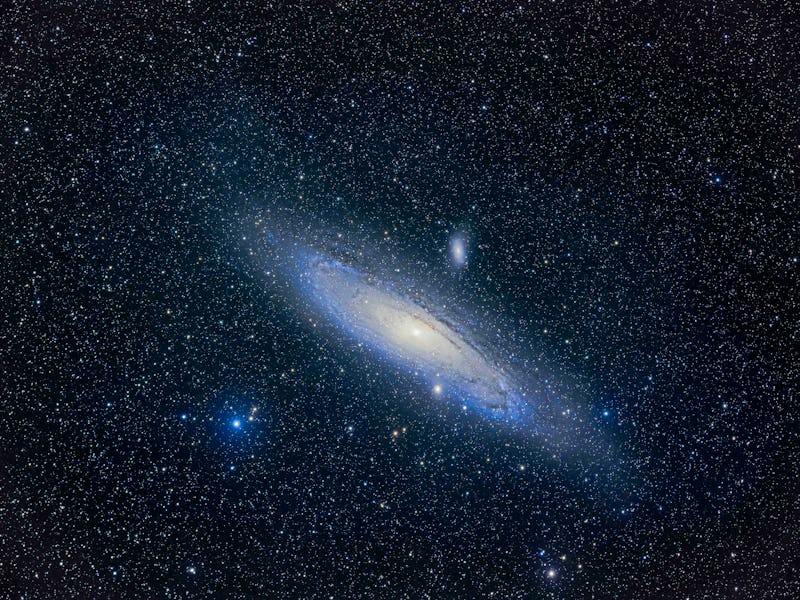The Webb Telescope will study a galaxy on a collision course with the Milky Way
Perhaps we have a shared history with our galactic neighbor.

Hundreds of distant red giant stars in another galaxy are the upcoming targets of an upcoming James Webb Space Telescope observation. The researchers behind the proposal hope that by looking at stars beyond the Milky Way, they’ll add to what is known about the larger galactic community to which we belong.
The Milky Way belongs to the aptly-named Local Group. One mesmerizing member of this club is the Andromeda Galaxy, located within cosmic arms reach at roughly 2 million light-years away. The 229 red giant stars are all in Andromeda’s spiral arms, and scientists will take a close look at their light as part of NASA’s Webb Early Release Science (ERS) program.
Andromeda is not only the closest Milky Way-like galaxy to us, but it’s also heading right toward us. In 4.5 billion years, the two galaxies will merge. But don’t worry — there’s enough space between stars that anyone still alive will hardly notice, aside from some new, bright points of light.
Webb will debut its first official science images on Tuesday. ERS will span the rest of 2022. While Andromeda isn’t in the first batch of images announced by ESA Friday, it still is a high priority target.
Another study transformed the brightness measurements of red giant stars into sound.
Why it matters — Stars are the building blocks of galaxies. The more astronomers learn about stars, the better picture they can form about the home galaxy’s history — and its future. The team is looking at red giants, which are stars of advanced age. The Sun will become a red giant in about 6 billion years, bloating up and swallowing Mercury, Venus, and possibly Earth. What happens in our corner of the cosmos might be happening at large in the Local Group, in places like Andromeda, too.
“Andromeda is a large spiral galaxy, in some ways similar to our own,” Jon Holtzman, a New Mexico State University collaborating scientist on the new work, tells Inverse.
Also known as Messier 31, Andromeda is close enough that Webb can study its individual stars. “We’ve learned a lot about our own Milky Way galaxy,” Holtzman adds, “but we need to understand to what extent other spiral galaxies are like our own, and to what extent there is some diversity of properties.”
A 61,000-light-year-long section of the Andromeda galaxy, as captured by the Hubble Space Telescope.
What’s next — They will analyze the light from these giant stars through a technique called spectroscopy.
“Spectroscopy splits the light from individual stars into its constituent detailed colors,” Holtzman says. “This allows us to measure absorption bands in the star light that are caused by heavier elements in the stars’ atmospheres, and this in turn allows us to measure things about the composition of the stars.”
The elements within stars can reveal their ages. The first generation of stars, for example, were only made of hydrogen and helium. When these original stars finally perished, their explosive finales as supernovas caused the formation of heavier elements, which newer stars contain.
“In the Milky Way, there is an interesting split in the chemical properties of older stars compared with younger stars in the disk of the galaxy,” Holtzman says. “Our program is designed to understand whether a similar feature is seen in Andromeda,” adding that this then “will help us to understand whether the formation paths of the two galaxies are similar.”